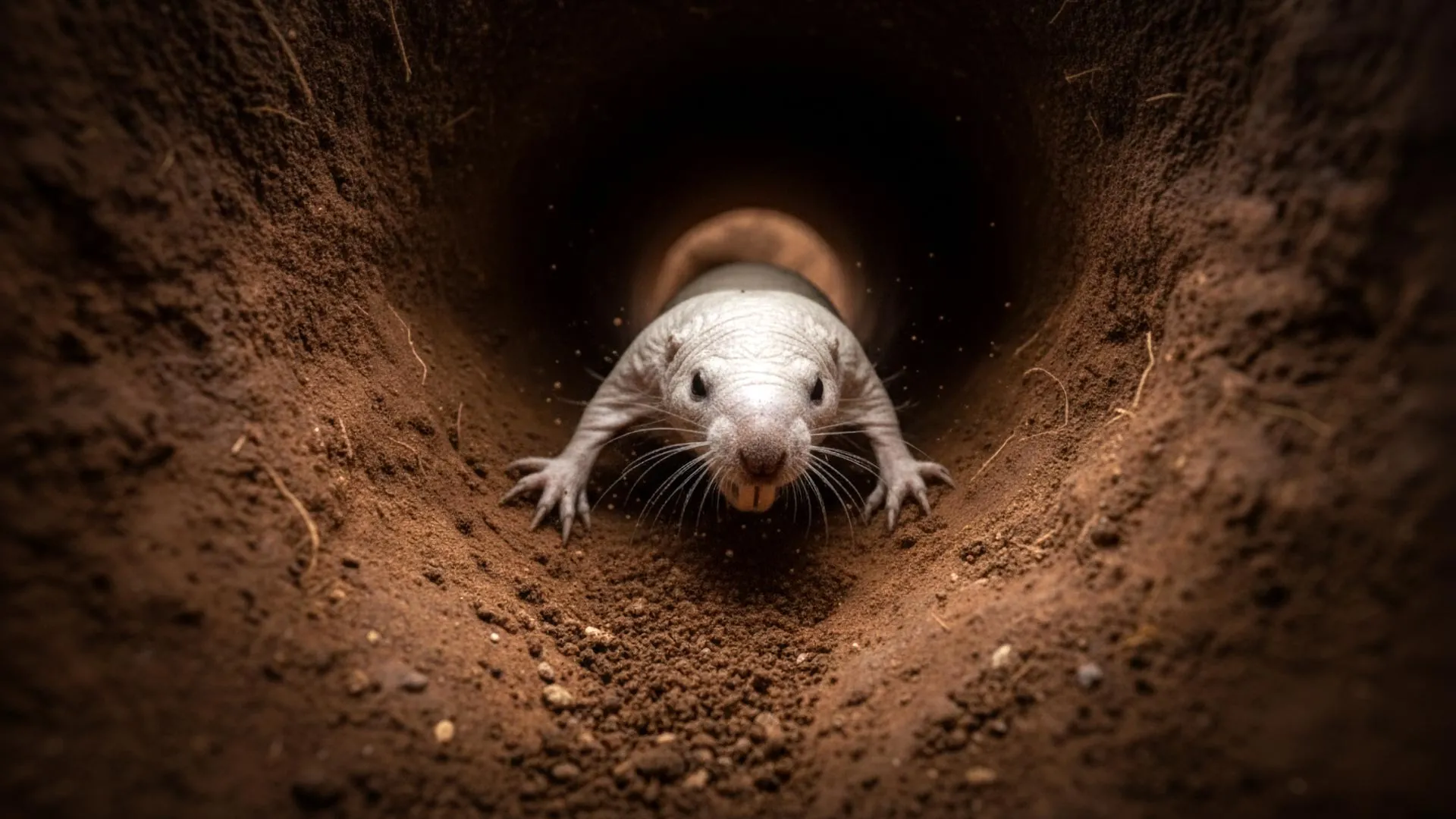Scientists have long been fascinated by the naked mole-rat — a nearly hairless, wrinkly rodent that can live up to 40 years, far outlasting most animals its size. Now, new research suggests that its extraordinary lifespan might come down to just four amino acid changes in a single enzyme.
The study, led by Yu Chen and colleagues, reveals that these subtle evolutionary tweaks in cGAS — an enzyme in the innate immune system responsible for detecting DNA and triggering cellular defenses — could help naked mole-rats repair genetic damage more efficiently as they age. In contrast, the same enzyme in humans and mice can actually hinder DNA repair, potentially accelerating aging.
How Naked Mole-Rats Keep Their DNA Intact
One of the keys to long life is maintaining a stable genome. In humans and other mammals, homologous recombination (HR) — a pathway that fixes DNA breaks — is vital for this. However, in most species, cGAS interferes with HR, compromising DNA integrity over time.
When researchers studied the naked mole-rat’s version of cGAS, they found that four amino acid substitutions make a big difference. These changes prevent the enzyme from being tagged for degradation, allowing it to persist longer after DNA damage. The stable cGAS can then interact more effectively with key DNA repair proteins such as FANCI and RAD50, bolstering the repair process and protecting the genome.
Evolutionary Tweaks That Extend Life
To test the impact of these molecular tweaks, the scientists removed cGAS from naked mole-rat cells. The result: DNA damage skyrocketed, proving the enzyme’s crucial protective role. Even more remarkably, when they inserted the same four amino acid changes into fruit flies carrying human cGAS, the flies lived longer than their unmodified counterparts.
This discovery suggests that a few precise changes in protein structure can dramatically affect how cells respond to genetic stress — and perhaps explain how the naked mole-rat resists aging for so long.
A Window Into Longevity
“The findings from Chen et al. describe an unexpected role for naked mole-rat cGAS in the nucleus that influences longevity,” write John Martinez and colleagues in an accompanying Perspective. “Further research will be required to explore whether cGAS plays similar roles in other species — but the answer may be more complex than we think.”
These results provide a powerful clue in the ongoing search to understand — and maybe one day replicate — nature’s secrets to a longer, healthier life.
